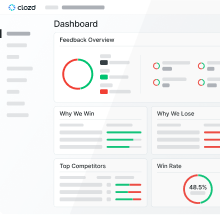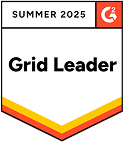
I recently finished reading Greg McKeown’s book, Essentialism: The Disciplined Pursuit of Less. In the book, McKeown shows how individuals and orgs can accomplish more by focusing on what’s essential.
As I read, I couldn’t help but reflect on my years as a product marketing manager for a fast-growing enterprise software company. McKeown’s Essentialism reinforces some of the critical lessons I learned about how a product marketer can deliver true value to his or her organization. These same lessons have been reinforced again through my experiences at Clozd where we consult with heads of product marketing at prolific technology companies like Avalara, Cision, Marketo, etc.

While I’ll be the first to admit that the roles and expectations of product marketers can vary depending on factors such as org maturity, size, and culture - I’ve found that the most effective product marketers consistently boil their responsibilities down to one essential question, “How can I generate more revenue for my organization?”
As a product marketing manager at Qualtrics, I constantly asked myself the question, “Is this task, project, or goal going to lead to more revenue?” “If not,” I told myself, “then I should stop doing it.” This laser focus on supporting revenue generation centered me and helped me prioritize the wave of requests and competing priorities that bombarded me. In McKeown’s words, “Essentialism is not about how to get more things done, it’s about getting the right things done.” Focusing on revenue generation helped me say no to some tasks and projects, in favor of those that would have a material impact on our org’s ability to win deals and increase market share.
Based on those experiences, here are a few essential tips I’d share with product marketers who, like me, want to be laser-focused on driving revenue:
Work with sales leaders to identify their biggest problems - then solve those problems.
It’s no secret that the sales organization plays a significant (perhaps the most significant) role in driving revenue, especially at enterprise B2B sales companies like Qualtrics. Surprisingly, I’ve found that there can often be a rift or misalignment between the marketing team and the sales team. In many cases it comes down to ego and politics - both teams thinking their domain is more essential and that the other would be keen to learn a few lessons from them. But, when sales and marketing teams are on the same page, both teams win.
Product marketers shouldn’t hesitate to bridge the gap, acknowledging there’s plenty to learn from the sales organization and that by identifying problems to solve for the sales team, you can more easily accomplish your goal of driving revenue.
Go to the sales leaders and ask them questions like “what’s keeping your team from hitting quota?”, “what resources would help your team sell more effectively?”, “what product gaps does your team constantly run into?”, etc. Getting answers to these questions helped me prioritize essential projects and tasks that would enable the sales team, thus enabling higher sales.
Put in the effort to know your customers, competition, and product offering better than anyone else in your company.
For some, this is an obvious tip. For others, it’s revolutionary. Either way, there’s nothing as empowering to a product marketer as having unprecedented knowledge about your customers, your competition, and your product offering. If you're new to your role, don't just jump into projects to try to prove your worth and produce some deliverables. Invest significant time and energy into educating yourself on your customers, competition, and products. Once I started doing this at Qualtrics, I became a go-to resource for colleagues across the org - especially the sales team.
Here are some of the methods and tools I used to do this:
- Conduct in-person interviews with long-time customers. If possible, travel to meet them. If there’s no budget for travel, take advantage of required travel (events, tradeshows, etc.) to coordinate on-sites with local clients. Go a day early or stay a day late, and pack them with client visits.
- Conduct a survey. If feasible (meaning you have access to enough potential respondents) send a survey to learn more about your customers, the challenges they’re solving with your product, and the impact it’s having on their organization.
- Conduct win-loss interviews. Conduct, or hire a third-party vendor to conduct, post-decision interviews with your won, lost, and churned clients. Use the interviews to uncover valuable competitive insights, product gaps, decision drivers, differentiators, and more. For a detailed guide to conducting effective win-loss interviews, check out this helpful ebook.
Apply essentialism to the content you develop.
Developing sales and marketing content is typically a big part of a product marketer’s role. And, because of that, I know many a product marketer that creates content for the sake of creating content. For some reason they think that publishing content, in and of itself, is a sign that they’re succeeding in their role. Don’t fall into that trap. Apply essentialism to the content you develop. Determine which content will have the biggest impact, then devote adequate time and energy to making it great.
To do this ask yourself the question, “What content can I develop that will help our customers and prospects achieve their goals and/or do their jobs better?” Next consider the question, “What content can I develop that will enable our sales team to achieve their goals?” It’s easy to answer these questions if you’ve implemented the tips from the previous sections of this article. Depending on the size of your org, the products you’re selling, and the nuances of your go-to-market strategy, it sometimes makes sense to prioritize the content your sales team needs, over what your customers could use. That’s a decision you’ll have to make for yourself.
For example, one of the products I was responsible for at Qualtrics was essentially an add-on to our company’s core platform. There were plenty of opportunities to develop external content for prospects and customers that drove leads; but, I knew we could drive more revenue by training and enabling the sales team to incorporate this add-on into their proposals to existing prospects and clients. To accomplish this, I invested extra time (at the expense of other projects and tasks) to create physical packages full of helpful content and resources that were delivered to every member of the sales team globally. In this digital age, receiving a physical toolkit was refreshing and unique. It helped drive interest, learning, and adoption. In the following quarter, pipeline for our add-on product climbed from a previous high of $2 million to a record of $5 million.
Applying essentialism to your own content strategy will help you maximize the most meaningful opportunities to drive revenue by building quality content that really matters.
In conclusion, the principles of essentialism can help product marketers maximize their role and deliver lasting value to clients and colleagues. In the words of author Greg Mckeown, “[Essentialism] doesn’t mean just doing less for the sake of less . . . It is about making the wisest possible investment of your time and energy in order to operate at your highest point of contribution by doing only what is essential.”











.svg)










.svg)

.svg)




